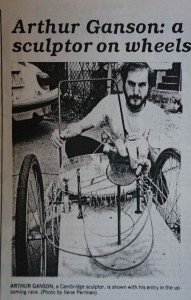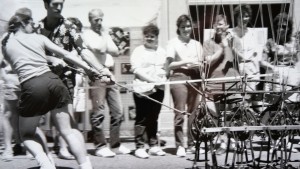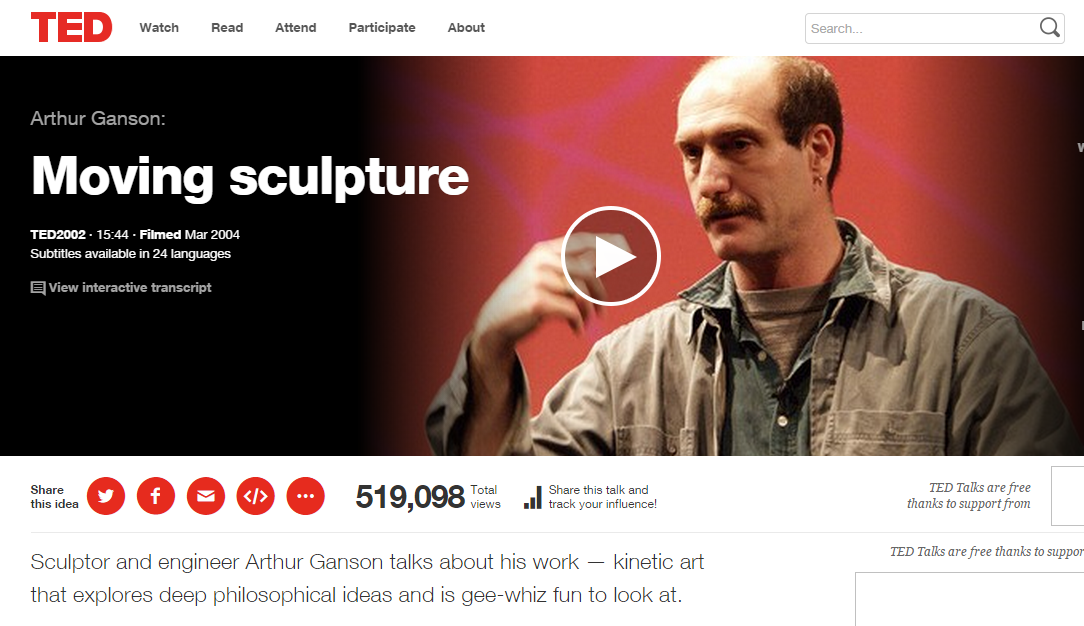“Yes, the piece needed to be pushed or pulled. I feel that this requirement led to a wide range of pieces that were pretty abstract in nature: what immediately comes to mind was the first welded steel construction of John Weidman [see his page] – a large very heavy steel abstract form which was pushed by his whole family. It was a piece of art that one would expect to find in a gallery, not on the street. There was nothing “vehicle” about it… actually it was a sort of anti-vehicle which made it all the more appropriate. It was so big and heavy and so hard to move that he always came across the finished line last. For me, that made it conceptually perfect.
“There was never subjective judgment – it was always win, place and show based on the order of crossing the finished line. (I don’t remember any other awards ever as part of the original events.) This also set the event apart from any other ‘art’ show. For me it was a perfect statement about winning and losing in the context of subjectivity- which seems to always come down to the personal taste of the ‘juror’. So often jurors and critics forget that it’s all made up, and that their truth is not a universal truth.”
Dodecapede
Designers take note! Can you match this with another work that doesn’t run on wheels? – Herold

Faster!
“This machine was a response to a call by the World Sculpture Racing Society in Boston to make sculpture that would be exhibited on the street and in the context of a road race where the ‘best’ work would be determined by race rules (win, place, and show) and not subjectivity. The cast hand is my own and the pen, controlled by three cams (x, y and z axis), moves in three dimensions and writes the word “faster!” on an index card while being pushed down the street. The faster the cart is pushed, the faster it writes. Warning, an out of control feedback loop between creator and creation can result in dangerously fast speeds and certain death.”
Video of Faster!
Arthur Ganson: Moving sculpture (Ted Talk, 2009)

